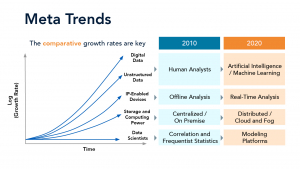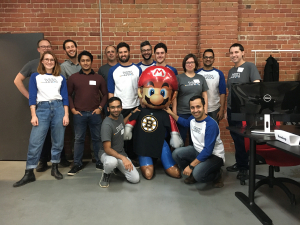Let’s TAC™ About It: The Bridge to AI Experts
This is the first installment of our new blog series, where we will cover the many capabilities and benefits of VIA’s Trusted Analytics Chain™ (TAC™). So, are you ready to TAC™ about it?

Data science roles have proliferated in the past decade. The growth numbers look flat, however, in comparison to other technology trends.
AI is embedded in our phones, our TVs, and our cars. With 67% of large companies projected to have AI initiatives in place by 2021, big data and machine learning are no longer relegated to long-term, R&D projects in mainstream businesses. These are now critical functions required for the long-term prosperity of business.
Many organizations with vast amounts of data struggle to recruit, develop, and retain the data science talent they need to analyze their data and deliver actionable insights. A large ecosystem of big data companies, AI specialist companies, and tools have emerged to address this data glut and talent shortage. However, there are very real data security and privacy risks to consider for the firms that work with external AI companies. In addition, selecting and managing AI companies is costly and time consuming. These barriers can trap an organization’s data and limit its insights.
TAC™ reduces the time, cost, and risks to data security and privacy of working with external analysts in multiple ways.
- TAC™ leaves the data where it is. Instead of sending data to an analyst, TAC™ controls the code delivered to the data’s location (even in multiple locations) through federated learning.
- TAC™ automates data anomaly checks, data cleaning and harmonization, and NLP PII checks.
- TAC™ tracks and, when required, restricts what analysis can be performed at the data’s location, through smart contracts and other programmatic controls.
- TAC™ provides data owners control over results returned to analysts through digital watermarking, k-anonymity, additive homomorphic encryption, and other mathematical safeguards.
- TAC™ streamlines data access workflows so companies can even grant multiple AI experts access to the same dataset. This allows companies to leverage the wisdom of the crowd to select the best solution for their particular challenge.
In short, TAC™ is a secure bridge between a company’s distributed data and expert analysts. VIA works with global electric utilities and government agencies to help them gain access to the AI specialists that can harness massive datasets, even across companies, to transition to a cleaner, safer, and greener energy industry.


